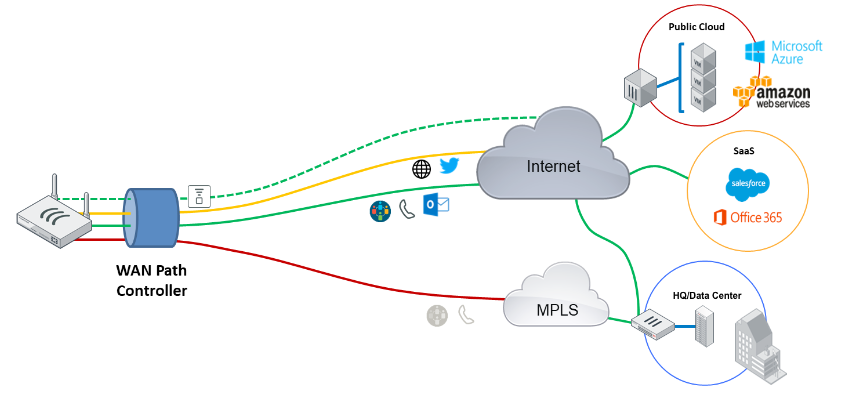
what is the use of a software defined wide area network?. What is an SD WAN? An SD WAN is a network that uses software to manage the flow of data across multiple connections. Typically, it’s used by companies who have multiple internet connections and want to utilize them in the most effective way possible.
What is an SD WAN?
SD WAN is a network solution that uses software to manage your internet connection. Instead of using hardware devices, you can manage the connection with a cloud-based solution or by using a software-based solution. The latter is called software-defined wide area network (SD-WAN).
This means that instead of needing special hardware to connect your branch offices and remote sites, data center locations, and other remote locations across the world, what is the use of a software defined wide area network? you can use SD-WAN to connect them all. It also gives businesses more control over their networks because they have full access to their bandwidth usage and can choose whether or not they want certain applications reaching specific regions throughout the organization’s infrastructure.

software defined wide area network
An SD WAN (software defined wide area network) is a type of software-based communications system that can be used to create a secure, reliable and efficient connection between multiple locations. In particular, it offers the ability to control the speed and bandwidth of the connection by allowing administrators to set policies that govern how data is transferred.
An SD WAN consists of a series of nodes placed throughout your organization’s network infrastructure. Each node acts as an endpoint for one or more virtual circuits that make up your wide area network (WAN). The nodes communicate with each other over standard Internet Protocol (IP) networks such as Ethernet or wireless carriers like 4G LTE/5G.
What is the Use of a Software Defined Wide Area Network?
A Software-Defined Wide Area Network (SD-WAN) is a technology that simplifies the management and operation of a wide area network by decoupling (or separating) the network hardware from its control mechanism. SD-WAN allows businesses to create a more agile, scalable, and cost-effective network infrastructure. Here are the key uses and benefits of SD-WAN:
1. Enhanced Network Performance
SD-WAN enables intelligent routing of traffic across multiple WAN links (e.g., MPLS, broadband, LTE) based on real-time conditions such as bandwidth, latency, and priority. It ensures that critical applications receive the best performance by directing traffic over the most efficient path.
2. Cost Efficiency
Traditional WANs often rely on expensive private MPLS circuits. SD-WAN allows businesses to leverage less expensive broadband or internet connections while maintaining performance and reliability, significantly reducing operational costs.
3. Centralized Management
SD-WAN provides a centralized control interface that allows IT teams to manage and monitor the entire WAN network from a single platform. This simplifies configuration, troubleshooting, and network updates across all locations.
4. Improved Security
SD-WAN comes with built-in security features such as encryption, firewalls, and segmentation, ensuring secure data transmission across the network. It enables businesses to enforce consistent security policies across all branches and endpoints.
5. Agility and Flexibility
With SD-WAN, businesses can quickly scale up or down their network infrastructure to meet changing demands. New sites or branches can be brought online much faster since the network is controlled by software rather than requiring complex hardware setups.
6. Optimized Cloud Connectivity
As more businesses move to cloud services (like SaaS applications or cloud-hosted infrastructure), SD-WAN provides optimized and direct access to these cloud applications, reducing latency and improving overall performance compared to traditional WAN setups.
7. Application Prioritization
SD-WAN enables businesses to prioritize specific applications based on their importance. For example, it can ensure that mission-critical applications like voice over IP (VoIP) or video conferencing receive priority over less critical traffic like file downloads.
8. Reliable Connectivity
SD-WAN uses multiple WAN links, providing automatic failover and redundancy. If one connection fails or experiences issues, traffic can be rerouted through another link without disruption, ensuring high availability and business continuity.
9. Simplified Branch Operations
For businesses with multiple branch locations, SD-WAN eliminates the need for complex network configurations at each site. It simplifies deployment and management, allowing branches to be set up more efficiently.
10. Traffic Visibility and Control
SD-WAN offers granular visibility into traffic patterns, bandwidth usage, and application performance across the entire network. This insight allows IT teams to make informed decisions to optimize network resources.

software-defined wide-area network
SD-WAN is an evolution of the traditional WAN. It’s a network of multiple connections that allows businesses to extend their WAN policies using more efficient and cost-effective methods than traditional methods.
However, it’s important to note that SD-WAN isn’t a replacement for the traditional WAN; rather, it serves as an enhancement that allows companies to build out their networks in a way that works for them—flexible and scalable with cheaper costs than traditional WANs.
Furthermore, SD-WAN can be used by both small and large organizations alike because it provides excellent security features at all scales.
software-defined wide area network
SD WAN is a combination of software and hardware that provides you with an advanced way to manage your company’s data. It uses software to control network resources, manage the network and improve performance.
With SD WAN, you can make changes to your network without having to physically alter any hardware in the system. Because it’s so flexible, it can be used for a variety of applications, including testing new applications and rolling out new services more quickly than ever before.
It has many similarities with Software Defined Networking (SDN), which is considered an advanced version of SDWAN. Some experts believe that SDWAN will replace SDN because it offers modern technologies that provide faster performance at lower costs than existing solutions do today

How does SD WAN work?
Software defined wide area network. connect to internet connections, manage traffic and security.
- Network management: SD-WANs use software to monitor the health of a company’s entire network. This allows administrators to identify issues as they arise so they can be fixed before they affect any users or applications.
- Connectivity: SD-WANs are able to connect with multiple carriers at once for failover purposes or load balancing. SD-WANs also allow companies that have switched over from MPLS (Multiprotocol Label Switching) or private line services to continue using their existing infrastructure while adding new features like increased performance and improved reliability.
- Traffic routing: The SD-WAN’s routing engine will automatically distribute bandwidth between multiple internal lines in order provide maximum throughput for each device on your network at all times regardless of where it’s located within your premises (e.g., remote offices). It also ensures that high priority packets receive preferential treatment when transmitting data across long distances without having any impact on latency or jitter levels experienced by other types of traffic traversing those same routes due its intelligent traffic prioritization algorithms which ensure fair distribution among all users connected via an access point located near them rather than just those who happen live closest towards where those resources reside physically.”

Why choose an SD WAN solution?
- Agility: Adopting a software-defined WAN solution enables you to respond quickly and easily to business demands.
- Performance: A software-defined WAN solution can give you an enhanced user experience, which means that your digital services will be more reliable and faster for customers.
- Cost savings: Software-defined networks enable you to reduce operational costs through automation, elimination of hardware and virtualization of network functions.
- Greater security: With SDWAN, it’s possible to improve your security posture through secure connectivity across multiple sites.
Technical requirements for using an SD WAN solution.
- SD-WAN is a cloud-based service that offers the following benefits:
- Reduces network complexity
- Improves network performance
- Increases scalability and performance
- Decreases costs
- Improves security
Improves reliability Reduces network complexity Reduces network complexity by reducing the number of devices, cables and interfaces within the network Improves performance Increases throughput and reduces latency to improve application performance
An SD WAN makes it easier to do more with your company’s internet connection.
So what does a software defined wide area network (SD-WAN) do?
An SD-WAN makes it easier to connect remote branch offices by providing better security, bandwidth management, and cost savings. It allows you to use the internet more efficiently so that your company can do more with its internet connection.
what is the use of a software defined wide area network?. Reduces network complexity: Network virtualization enables you to separate the physical network from the logical network. This separation makes it easier for you to manage your networks, because you can focus on specific tasks without having to worry about managing all of the underlying componentsAn SD-WAN allows you to connect remote sites without having to install expensive hardware in each location. Your company will spend less money on new hardware and support. The SD-WAN also allows you to more easily manage your internet connections by allowing you to prioritize traffic based on importance..

Conclusion
The main benefit of an SD WAN is that it makes it easier for your company to do more with its internet connection. It allows you to cost-effectively connect multiple sites and offices, giving you a better chance at success in today’s competitive marketplace. In addition, by introducing new technologies like VPNs and VoIP into your network infrastructure, an SD WAN solution can make managing this type of infrastructure easier than ever before. If you’re interested in learning more about what an SD WAN solution could do for your business then contact us today at (555) 555-5555!
Read More: what is the function of the metropolitan area network?







